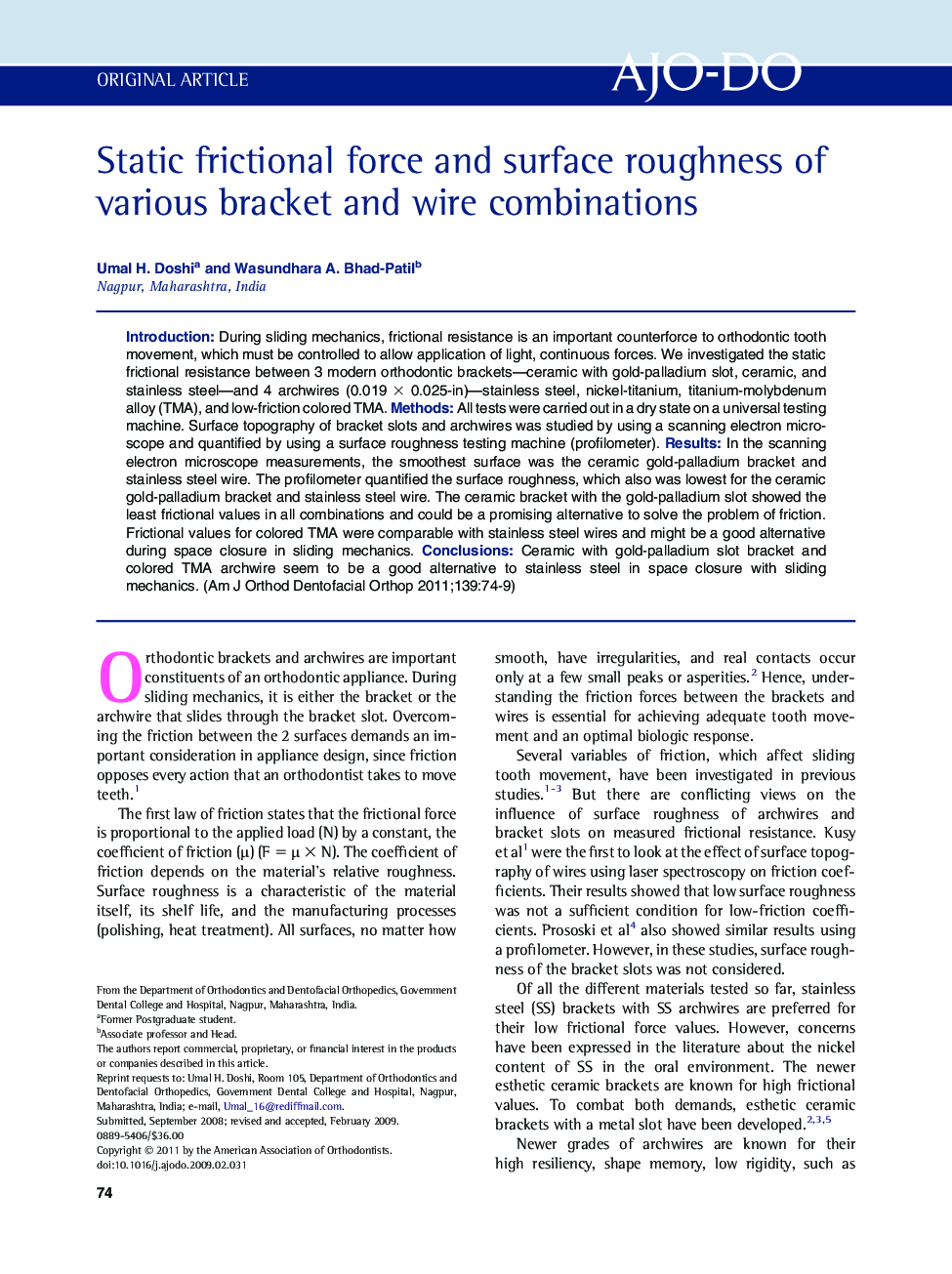| Article ID | Journal | Published Year | Pages | File Type |
|---|---|---|---|---|
| 3117338 | American Journal of Orthodontics and Dentofacial Orthopedics | 2011 | 6 Pages |
IntroductionDuring sliding mechanics, frictional resistance is an important counterforce to orthodontic tooth movement, which must be controlled to allow application of light, continuous forces. We investigated the static frictional resistance between 3 modern orthodontic brackets—ceramic with gold-palladium slot, ceramic, and stainless steel—and 4 archwires (0.019 × 0.025-in)—stainless steel, nickel-titanium, titanium-molybdenum alloy (TMA), and low-friction colored TMA.MethodsAll tests were carried out in a dry state on a universal testing machine. Surface topography of bracket slots and archwires was studied by using a scanning electron microscope and quantified by using a surface roughness testing machine (profilometer).ResultsIn the scanning electron microscope measurements, the smoothest surface was the ceramic gold-palladium bracket and stainless steel wire. The profilometer quantified the surface roughness, which also was lowest for the ceramic gold-palladium bracket and stainless steel wire. The ceramic bracket with the gold-palladium slot showed the least frictional values in all combinations and could be a promising alternative to solve the problem of friction. Frictional values for colored TMA were comparable with stainless steel wires and might be a good alternative during space closure in sliding mechanics.ConclusionsCeramic with gold-palladium slot bracket and colored TMA archwire seem to be a good alternative to stainless steel in space closure with sliding mechanics.
